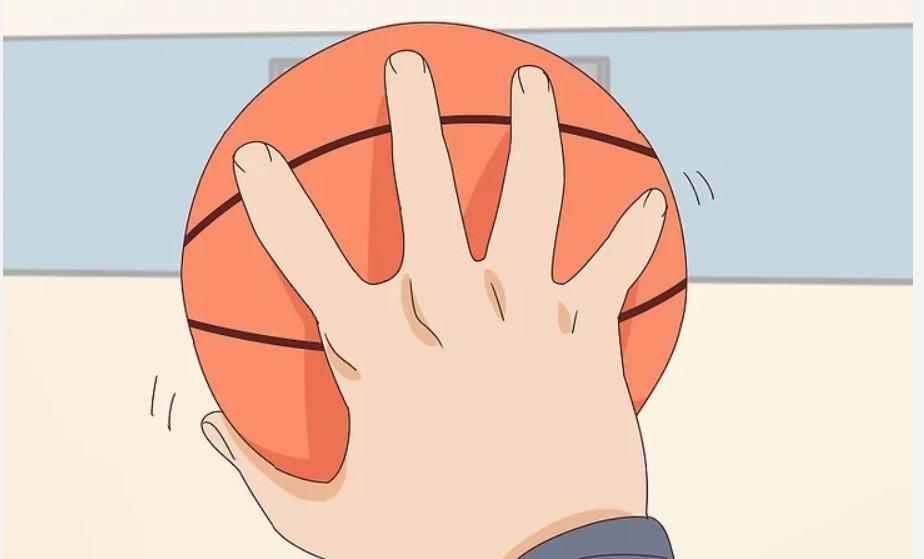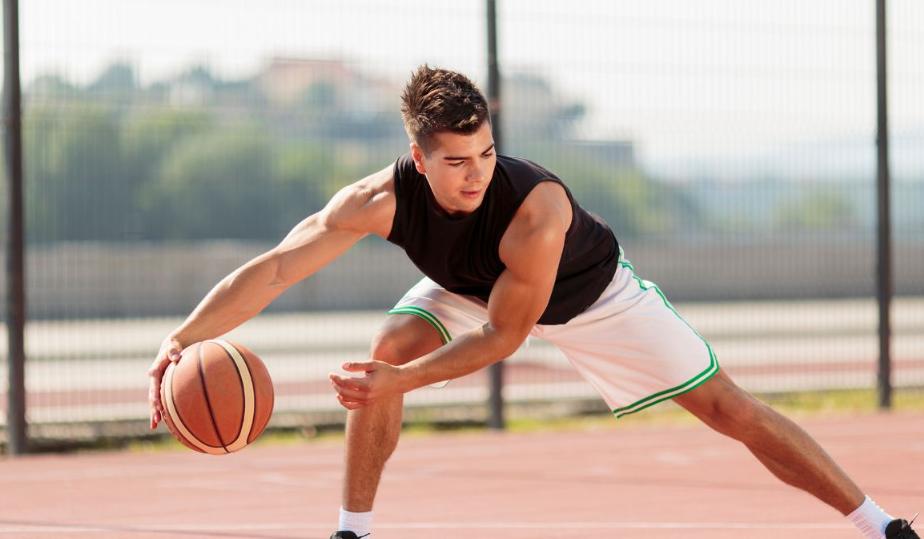Palming a basketball is a skill that can significantly enhance your control and maneuverability on the court. Whether you’re driving to the basket, making a quick pass, or going for a slam dunk, the ability to palm the ball securely can give you an edge over your competition. Many players struggle with this technique due to variations in hand size, strength, and grip technique. However, with the right approach, anyone can improve their ability to palm a basketball. This guide provides a detailed, step-by-step process to help you master this essential skill. We’ll cover everything from understanding the fundamentals of palming to specific exercises designed to increase your grip strength and control. By following these steps, you’ll be able to know how to palm a basketball and improve your performance and confidence on the basketball court.

Understanding the Basics of Palming a Basketball
Palming a basketball involves gripping the ball with one hand so that you can hold it securely without needing to use your other hand. This requires a combination of hand size, finger strength, and technique. The key is to create enough surface contact between your hand and the ball, allowing for a strong grip. Understanding your hand size in relation to the ball is crucial, as it affects how you approach the technique. For those with smaller hands, developing a proper grip technique is essential to successfully palm the ball. Additionally, understanding the importance of hand placement, finger pressure, and ball rotation will set the foundation for mastering the palming technique. Whether you’re a beginner or an experienced player looking to refine your skills, knowing these basics is the first step toward palming the basketball effectively.
Essential Techniques of Palming a Basketball
Step 1: Measuring Your Hand and Grip Potential
1.Assessing Your Hand Span for Optimal Grip
Before attempting to palm a basketball, the first step is to measure your hand span. This is done by spreading your fingers as wide as possible and measuring from the tip of your thumb to the tip of your pinky finger. This measurement helps you understand how much of the basketball your hand can cover. A larger hand span naturally makes it easier to palm the ball, but even smaller hands can learn to palm effectively with the right technique. Knowing your hand span is crucial because it informs you about the grip adjustments you might need to make.
2.Understanding the Impact of Hand Size on Palming
After measuring your hand span, it’s important to assess your grip strength. Grip strength is a key factor in successfully palming a basketball, and it’s something that can be improved with practice. Start by using a grip strength trainer or simply a tennis ball to squeeze repeatedly. This exercise helps you gauge your current grip strength and identify areas for improvement. Understanding where you stand with your grip strength will guide you in developing the necessary power to hold and maneuver the ball with one hand effectively.
3.Maximizing Your Grip Potential Despite Hand Size
Finally, evaluate the flexibility and dexterity of your fingers, as these aspects contribute to a better grip. Exercises like finger stretches and resistance band routines can help increase your finger flexibility, allowing for a better grip on the basketball. Finger dexterity plays a vital role in adjusting your grip during different movements on the court. By improving your finger flexibility and strength, you’ll be better equipped to hold the basketball securely, even during dynamic actions like dribbling or shooting.

Step 2: Strengthening Your Grip for Better Control
1. Key Exercises to Enhance Grip Strength
Grip strength is essential for effectively palming a basketball, and strengthening it requires targeted exercises. Begin with exercises like squeezing a rubber ball or using grip trainers designed to improve hand strength. These tools provide resistance that challenges your muscles, leading to increased grip power over time. Squeeze the ball or grip trainer for several repetitions, focusing on building endurance and strength in your hand muscles. Consistent use of these tools will help you develop the grip strength needed to hold and control a basketball securely with one hand.
2.Building Forearm Strength for Better Ball Control
In addition to grip trainers, incorporate wrist curls into your routine to strengthen the muscles in your forearms. Strong forearm muscles contribute to a more powerful and stable grip, essential for palming a basketball. Perform wrist curls by holding a lightweight dumbbell or a barbell and curling your wrist upwards and downwards in a controlled motion. This exercise targets the flexor and extensor muscles in your forearms, improving the overall strength and control of your grip. Regular wrist curls will significantly enhance your ability to palm a basketball.
3. Incorporating Finger Dexterity Drills for Enhanced Grip
To further enhance your grip, practice holding a basketball with just your fingertips. Begin by placing the ball in your dominant hand, spreading your fingers wide, and gripping the ball using only your fingertips. Hold the position for as long as possible, then switch hands. This exercise not only strengthens your grip but also improves your finger control and dexterity. Over time, increase the duration of each hold to build endurance. Practicing this drill regularly will improve your confidence and ability to palm the basketball during a game.
Step 3: Practicing the Palming Technique Properly
1.Mastering Hand Positioning and Control
Once you’ve strengthened your grip, it’s time to practice the palming technique itself. Start by positioning your hand on the side of the basketball, ensuring that your fingers are spread wide. Your thumb should be placed on one side of the ball, with the other fingers gripping the opposite side. This hand positioning is crucial for maximizing contact with the ball’s surface, providing a more secure grip. Practice lifting the ball using this technique, focusing on maintaining even pressure across all your fingers to prevent the ball from slipping.
2.Integrating Palming into Your Daily Practice Routine
After mastering the basic hand positioning, begin practicing with a stationary ball before moving on to more dynamic exercises. Hold the ball in one hand, using the palming technique, and lift it up and down in a controlled manner. This exercise helps build muscle memory and strengthens your grip in a real-game scenario. Once you’re comfortable with this, practice moving the ball around your body, simulating game situations. The more you practice this movement, the more natural and confident your palming technique will become.

3.Adapting the Palming Technique for Game Scenarios
To ensure you can palm the basketball effectively during a game, practice in a variety of situations. Try palming the ball while dribbling, catching passes, or even while jumping. This will help you adapt to different game scenarios, ensuring that your grip remains strong and reliable. Additionally, practicing in different conditions, such as when the ball is wet or slightly deflated, will prepare you for unexpected challenges during a game. The more varied your practice, the more adaptable your palming technique will become.
Common Mistakes to Avoid When Learning to Palm a Basketball
When learning to palm a basketball, several common mistakes can hinder your progress. One of the most frequent errors is relying too much on hand size rather than focusing on technique and grip strength. Players often assume that having small hands means they can’t palm the ball, but this isn’t necessarily true if the correct technique is applied. Another common mistake is neglecting to strengthen the wrist and forearm muscles, which are critical for maintaining control of the ball. Additionally, many players fail to practice consistently, which is essential for developing muscle memory and improving grip strength over time. By avoiding these mistakes, you can make steady progress in learning how to palm a basketball effectively.
Conclusion
Knowing how to palma basketball is a valuable skill that enhances your control and versatility on the court. By following the step-by-step guide outlined above, you can systematically improve your ability to grip and handle the ball with one hand. Remember, the key to mastering this skill lies in understanding your hand size, strengthening your grip, and practicing the technique regularly. With dedication and consistent effort, you’ll be able to palm a basketball confidently, regardless of your hand size. Whether you’re a beginner or an experienced player looking to refine your skills, these tips and exercises will help you achieve your goal and elevate your game.
FAQ
Can I palm a basketball if my hands are small?
Yes, you can palm a basketball even if your hands are small. The key is to focus on proper technique and strengthen your grip. By spreading your fingers wide and applying even pressure, you can increase your hand’s surface contact with the ball. Additionally, exercises to build hand, wrist, and forearm strength will significantly improve your ability to palm the basketball, regardless of hand size.
How long should I practice to improve my palming skills?
Improving your palming skills requires consistent practice. Aim to dedicate at least 15-20 minutes a day to exercises that strengthen your grip and improve your technique. Within a few weeks of regular practice, you should notice a significant improvement in your ability to palm the basketball.
Are there tools that can help me learn how to palm a basketball?
Yes, there are several tools that can assist you in learning to palm a basketball. Grip trainers, stress balls, and hand-strengthening devices are useful for building the necessary grip strength. Additionally, specialized basketballs with grip-enhancing surfaces can help you practice and improve your palming technique more effectively.

0 Comments